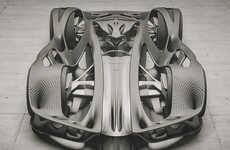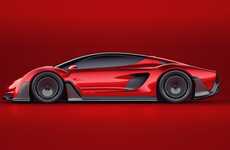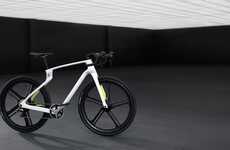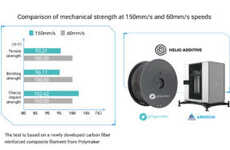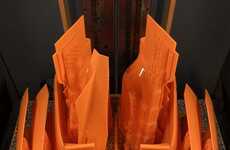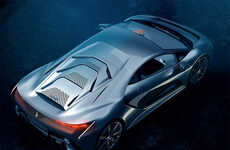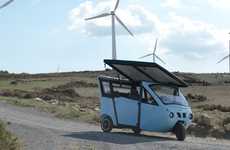
Divergent Microfactories Unveils a Stunning Printed Car Design
Laura McQuarrie — July 3, 2015 — Autos
References: divergentmicrofactories & 3dprinting
Now that California-based start-up Divergent Microfactories has unveiled its super sleek printed car, it hopes to revolutionize the way cars are built in the future. The striking 3D-printed car is made with aluminum joints that connect to a carbon fiber frame. In comparison to the standard automotive assembly process, this method takes up less space and significantly reduces the amount of energy and materials needed to create a standard supercar.
The Blade is touted as an eco-friendly supercar that weighs in at 10 percent less that comparable models at 1,400 pounds. But with a 700ho bi-fuel engine that can be filled with either natural gas or gasoline, Blade is no lightweight—this printed car is capable of accelerating from 0-60 mph in just about two seconds.
Moving forward, Divergent Microfactories hopes to franchise the method it uses for assembly so that others can quickly create, distribute and enjoy the power of Blade.
The Blade is touted as an eco-friendly supercar that weighs in at 10 percent less that comparable models at 1,400 pounds. But with a 700ho bi-fuel engine that can be filled with either natural gas or gasoline, Blade is no lightweight—this printed car is capable of accelerating from 0-60 mph in just about two seconds.
Moving forward, Divergent Microfactories hopes to franchise the method it uses for assembly so that others can quickly create, distribute and enjoy the power of Blade.
Trend Themes
1. 3d-printed Vehicles - The use of 3D printing technology for creating vehicles has the potential to significantly reduce the materials and energy required, paving the way for cheaper, more eco-friendly vehicles.
2. Lightweight Supercars - There is an opportunity to create supercars that weigh significantly less than current models, making them faster and more fuel efficient.
3. Franchisable Assembly Methods - Creating a franchise for the 3D printing and assembly method for supercars could open the door to new business opportunities and increased accessibility to this technology.
Industry Implications
1. Automotive - The automotive industry is ripe for disruption with the potential for 3D-printed vehicles and eco-friendly supercars.
2. Manufacturing - The use of 3D printing technology for vehicle manufacturing could significantly reduce the resources required and streamline the assembly process, presenting new opportunities for the manufacturing industry.
3. Franchising - Creating a franchise for the 3D printing and assembly method for supercars could lead to new business models and opportunities for the franchising industry.
6.5
Score
Popularity
Activity
Freshness

